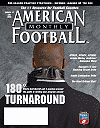AMERICAN FOOTBALL MONTHLY THE #1 RESOURCE FOR FOOTBALL COACHES
Article CategoriesAFM Magazine
|
Pre-Season Practice: The Importance of Making Every Minute Countby: Dan Weil© More from this issue Pre-season practice plays an important role in getting your team prepared for the upcoming season. We spoke to two successful head coaches – Mike Leach of Texas Tech and Terry Hoeppner of Indiana University – about how they conduct their pre-season practices and what they hope to get out of them. NCAA rules dictate that teams can begin practice about a month before their first game. Teams aren’t allowed to practice in full pads for the first five days. Also after that five-day acclimation period, teams can conduct two-a-day practices, but only every other day. Practice will start the second week in August at both Indiana and Texas Tech. Leach said he wouldn’t run two-a-day practices more than every other day even if the NCAA permitted it. “I think you get more product....The full article can only be seen by subscribers. Subscribe today!
|
|
|||||||
| HOME |
MAGAZINE |
SUBSCRIBE | ONLINE COLUMNISTS | COACHING VIDEOS |
Copyright 2025, AmericanFootballMonthly.com
All Rights Reserved





